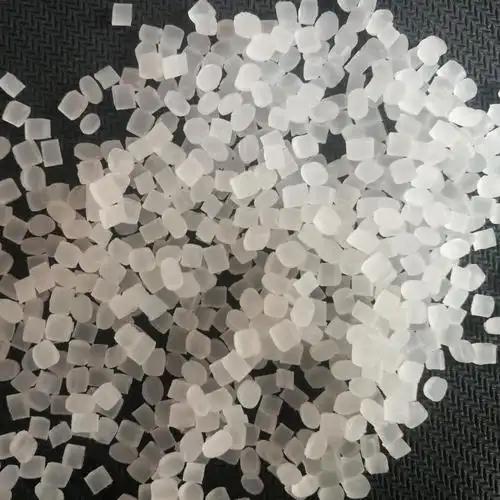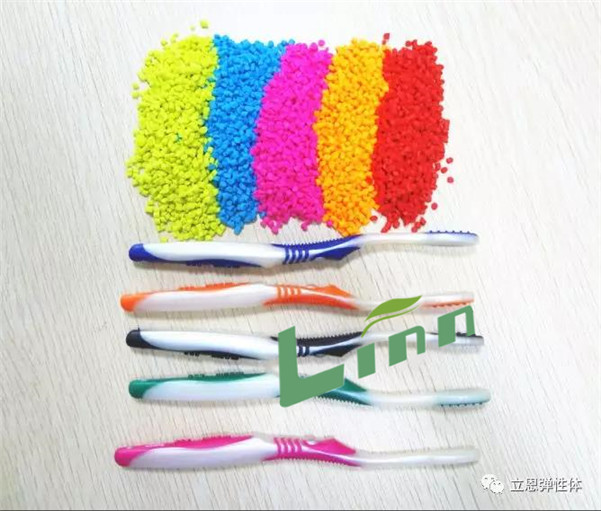As someone who’s been knee-deep in the materials industry for over a decade, I’ve seen the push for sustainability reshape how we think about plastics and elastomers. One question that keeps coming up, especially from manufacturers and eco-conscious designers, is whether Thermoplastic Rubber (TPR) can be recycled and reused. It’s a question close to my heart, having worked on projects where balancing performance with environmental responsibility was paramount. From crafting TPR shoe soles to specifying materials for automotive parts, I’ve navigated the recycling landscape firsthand. Let’s explore what makes TPR recyclable, the challenges involved, and how you can make the most of its eco-friendly potential.

What Is TPR, and Why Does Recycling Matter?
Before diving into the recyclability of TPR, let’s clarify what it is. TPR, or Thermoplastic Rubber, is a type of Thermoplastic Elastomer (TPE) that combines the elasticity of rubber with the processability of plastic. Typically based on Styrene-Butadiene-Styrene (SBS) or Styrene-Ethylene-Butylene-Styrene (SEBS) block copolymers, TPR is prized for its flexibility, durability, and ability to be molded into complex shapes. You’ll find it in everything from yoga mats to medical tubing, thanks to its versatility.
Recycling TPR is a hot topic because sustainability is no longer just a buzzword—it’s a necessity. Manufacturers face pressure to reduce waste, consumers demand eco-friendly products, and regulations like EU Circular Economy Action Plan push for recyclable materials. As someone who’s consulted on material selection for green initiatives, I’ve seen how TPR’s recyclability can be a game-changer—or a stumbling block—if not handled properly.
Is TPR Recyclable?
The short answer is yes, TPR is recyclable, but it’s not as straightforward as recycling a soda bottle. Unlike thermoset rubbers (like vulcanized rubber), which are chemically cross-linked and can’t be remelted, TPR’s thermoplastic nature allows it to be melted, reshaped, and reused. This is a big win for sustainability, as it reduces the need for virgin materials and minimizes landfill waste. However, the actual recycling process depends on several factors, which I’ll break down based on my experience.
Why TPR Is Recyclable
TPR’s recyclability stems from its thermoplastic properties. When heated to its melting point (typically 160°C to 200°C), TPR softens and can be reprocessed into new products. This makes it theoretically possible to recycle TPR scraps from manufacturing or end-of-life products like shoe soles or grips. In my work with a toy manufacturer, we successfully recycled TPR offcuts from the production line, turning them into new components without significant loss of quality.
Here’s a quick overview of TPR’s recycling potential:
|
Aspect |
Description |
Benefits |
Challenges |
|---|---|---|---|
|
Material Type |
Thermoplastic, can be melted and reshaped |
Reduces need for virgin materials |
Contamination can affect quality |
|
Recycling Process |
Regrind, melt, and reprocess into new products |
Cost-effective for manufacturers |
Requires clean, sorted material |
|
Applications |
Reused in similar or lower-grade products |
Extends material lifecycle |
Limited by local recycling infrastructure |
|
Environmental Impact |
Reduces landfill waste, lowers carbon footprint |
Supports sustainability goals |
Energy-intensive if not optimized |
The Recycling Process for TPR
From my time working with recycling facilities, here’s how TPR recycling typically works:
Collection: TPR waste is gathered, either from manufacturing scraps (e.g., sprues, runners) or post-consumer products (e.g., worn-out shoe soles).
Sorting: The material is sorted to ensure it’s free from contaminants like metals, other plastics, or thermoset rubbers. This step is critical, as mixed materials can ruin the recycled product.
Cleaning: TPR is cleaned to remove dirt, oils, or additives that could affect quality.
Regrinding: The material is shredded into small pellets or granules.
Reprocessing: The granules are melted and extruded or molded into new products, often blended with virgin TPR to maintain performance.
I once helped a factory set up an in-house recycling system for TPR scraps from yoga mat production. By regrinding and blending the scraps with 30% virgin material, we reduced material costs by 15% while keeping the mats’ softness and durability intact.

Challenges in Recycling TPR
While TPR is recyclable, there are hurdles that can make the process tricky. Here are the main challenges I’ve encountered:
1. Contamination
TPR is often used in composite products—like shoes with TPR soles bonded to fabric uppers—making it hard to separate for recycling. Contamination from adhesives, dyes, or other materials can degrade the quality of recycled TPR. In one project, we struggled to recycle TPR grips because they were co-molded with ABS plastic, requiring costly manual separation.
2. Additive Degradation
TPR formulations often include oils, fillers, and stabilizers that can break down during repeated heating cycles. This can affect the material’s elasticity or strength. I’ve seen recycled TPR lose some of its stretch after multiple cycles, which limited its use to lower-grade applications like filler materials.
3. Limited Recycling Infrastructure
Not all recycling facilities are equipped to handle TPR. Unlike PET or HDPE, which have well-established recycling streams, TPR is a niche material, and local facilities may lack the expertise or equipment. In my experience, urban areas with advanced recycling programs (e.g., in Europe or parts of Asia) are better equipped, but rural or less-developed regions often struggle.
4. Economic Viability
Recycling TPR can be costlier than using virgin material if the process isn’t optimized. Sorting, cleaning, and reprocessing require energy and labor, and small-scale operations may find it uneconomical. I advised a client to partner with a specialized TPE recycler to make the process cost-effective, as their in-house setup was too expensive.

Strategies to Maximize TPR Recycling
Over the years, I’ve picked up several strategies to make TPR recycling more effective, whether you’re a manufacturer or an end-user looking to dispose of TPR products responsibly.
1. Design for Recyclability
When designing TPR products, aim for mono-material construction to simplify recycling. For example, using TPR for both the sole and upper of a shoe reduces the need for separation. I worked with a footwear brand that switched to all-TPR sandals, making recycling far easier and boosting their sustainability credentials.
2. Use Clean Manufacturing Scraps
Manufacturing scraps (e.g., offcuts, defective parts) are often cleaner than post-consumer waste, making them ideal for recycling. In one factory I consulted for, we set up a closed-loop system where TPR scraps were immediately reground and reused, reducing waste by 20%.
3. Partner with Specialized Recyclers
Find recycling facilities that specialize in TPEs or plastics with elastomeric properties. These facilities have the expertise to handle TPR’s unique properties, ensuring higher-quality recycled material. I’ve connected clients with recyclers in Germany and Taiwan who excel at processing TPR.
4. Blend with Virgin Material
To maintain performance, blend recycled TPR with virgin material (typically 20%–50% recycled content). This approach worked well for a client producing TPR mats, where a 30% recycled blend delivered the same grip and durability as virgin TPR.
5. Educate Consumers
For post-consumer recycling, educate users on how to dispose of TPR products. Labels indicating that the product is recyclable TPR and directing consumers to specialized drop-off points can make a difference. I helped a toy company add recycling instructions to their packaging, which increased collection rates.
TPR vs. Other Materials: Recycling Comparison
To put TPR’s recyclability in context, let’s compare it with other common materials:
|
Material |
Recyclability |
Recycling Challenges |
Common Recycled Uses |
|---|---|---|---|
|
TPR |
Recyclable, can be melted and reshaped |
Contamination, additive degradation |
Mats, filler materials, lower-grade parts |
|
PET |
Highly recyclable, established streams |
Requires sorting, cleaning |
Bottles, fibers, packaging |
|
PVC |
Recyclable but limited due to additives |
Toxic emissions if burned, complex sorting |
Pipes, flooring |
|
Silicone |
Not recyclable (thermoset) |
Chemical cross-linking prevents remelting |
N/A (often landfilled) |
From my experience, TPR’s recyclability is a step above silicone (which is nearly impossible to recycle) but lags behind PET due to less developed recycling infrastructure. However, TPR’s ability to be reused in-house gives it an edge for manufacturers.

Real-World Insights: My Experience with TPR Recycling
Let me share a couple of stories from my career. A few years back, I worked with an automotive supplier producing TPR seals for car doors. The factory generated significant TPR waste from trimming excess material. We implemented a system to collect, grind, and blend the scraps with 25% virgin TPR, which we then used for non-critical parts like floor mats. This not only cut costs but also earned the company a sustainability award from their client.
In another case, a client making TPR toys wanted to market their products as eco-friendly. We partnered with a European recycler specializing in TPEs to process post-consumer toys. The challenge was contamination from paint and adhesives, but by working with the recycler to improve sorting, we achieved a 40% recycled content in new toys, which resonated well with environmentally conscious consumers.
Environmental Benefits of Recycling TPR
Recycling TPR offers clear environmental advantages:
Reduced Landfill Waste: Reusing TPR keeps it out of landfills, where plastics can take decades to decompose.
Lower Carbon Footprint: Recycling uses less energy than producing virgin TPR, especially if done locally. Studies suggest recycling TPEs can reduce CO₂ emissions by 30%–50% compared to virgin production.
Resource Conservation: Reusing TPR reduces the demand for petroleum-based raw materials, aligning with circular economy goals.
In my work, I’ve seen companies leverage these benefits to meet ISO 14001 environmental standards, gaining a competitive edge in markets like Europe and North America.
Limitations and Future Outlook
While TPR is recyclable, its full potential is limited by infrastructure and economic factors. Emerging technologies, like chemical recycling (breaking TPR into its base monomers), could make the process more efficient, but they’re not yet widely available. I’m optimistic about advancements in mechanical recycling and better sorting systems, which could make TPR recycling as mainstream as PET in the next decade.

Practical Tips for Recycling TPR
If you’re looking to recycle TPR, whether as a manufacturer or consumer, here’s my advice:
Check Local Facilities: Contact recycling centers to confirm they accept TPR or TPEs. Specialized recyclers are your best bet.
Minimize Contamination: For manufacturers, keep TPR scraps separate from other materials. For consumers, clean TPR products before recycling.
Work with Suppliers: Choose TPR suppliers who offer recyclable grades or take-back programs for end-of-life products.
Optimize Blends: When reprocessing, test blends of recycled and virgin TPR to ensure performance meets your needs.
Stay Informed: Keep up with advancements in TPE recycling, as new technologies are improving efficiency.
Closing Thoughts
TPR’s recyclability is one of its strongest selling points, offering a path to reduce waste and support sustainable manufacturing. While challenges like contamination and limited infrastructure exist, strategic design, partnerships with recyclers, and optimized processes can make TPR recycling both practical and cost-effective. From my years in the industry, I’ve seen how small changes—like recycling in-house scraps or choosing mono-material designs—can have a big impact.
Whether you’re a manufacturer looking to cut costs or a consumer aiming to make greener choices, understanding TPR’s recycling potential empowers you to act responsibly. If you’re tackling a specific recycling challenge with TPR, the Q&A below might shed more light.
Related Questions and Answers
Q: Can post-consumer TPR products, like shoe soles, be recycled?
A: Yes, but it requires sorting and cleaning to remove contaminants like adhesives or fabrics. Partnering with specialized TPE recyclers improves success rates.
Q: Does recycling TPR affect its quality?
A: Repeated recycling can degrade additives, reducing elasticity or strength. Blending with virgin TPR (20%–50%) helps maintain performance.
Q: Are there eco-friendly alternatives to TPR if recycling isn’t feasible?
A: Bio-based TPEs or biodegradable elastomers are options, but they’re costlier and less versatile. TPR remains a good balance of performance and recyclability.
Q: How can I find recyclers that accept TPR?
A: Check with local recycling centers or contact TPR suppliers for recommendations. Facilities in Europe, North America, and parts of Asia often handle TPEs.
Q: Is recycled TPR safe for food-contact or medical applications?
A: Recycled TPR must meet strict regulatory standards (e.g., FDA, REACH) for these uses. Virgin TPR is often preferred to ensure compliance.





